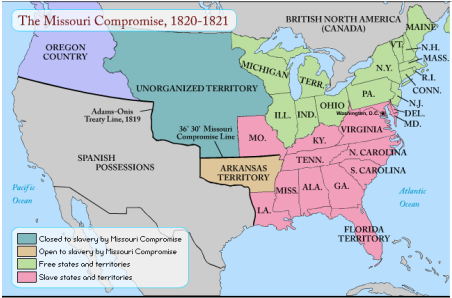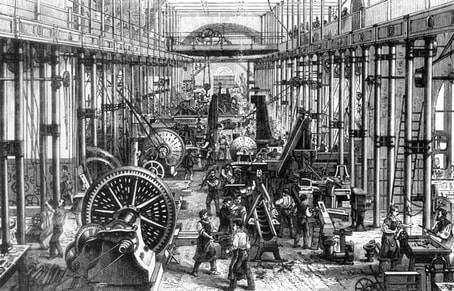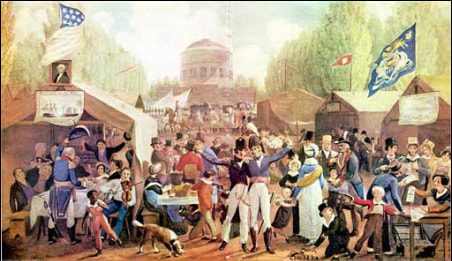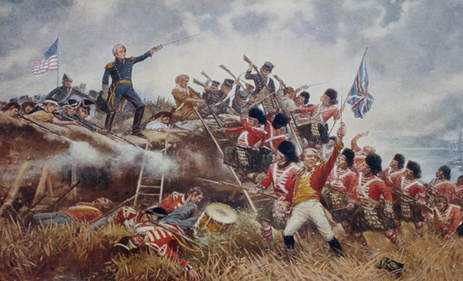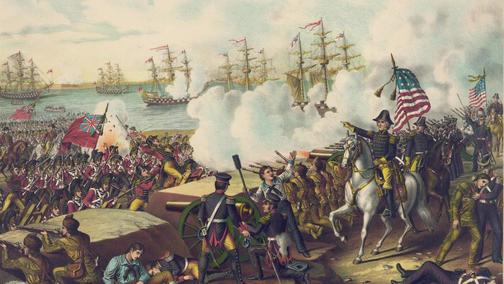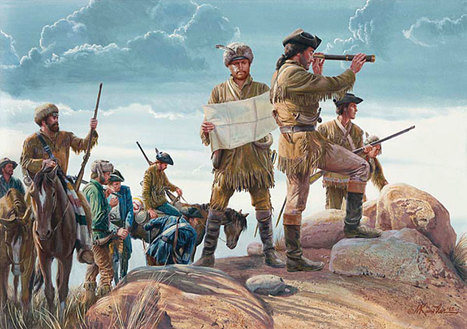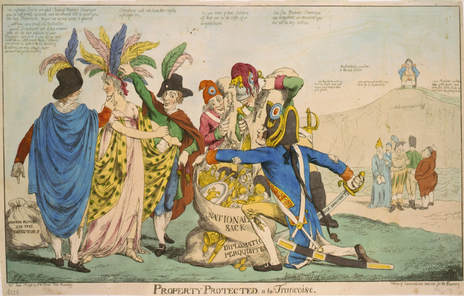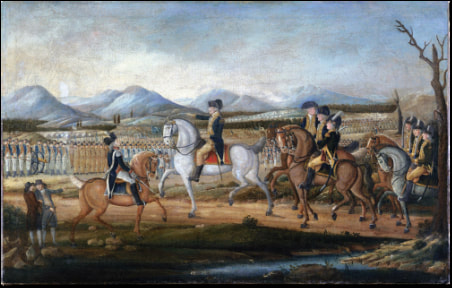|
Content Standards:
Students will analyze how history is a series of connected events shaped by multiple cause and effect relationships, tying past to present. Learning Target: I can summarize the emerging sectionalism and shifting political loyalties that followed the War of 1812. Critical Vocabulary: James Monroe, “Virginia Dynasty,” Henry Clay, American System, National Road, Tariff of 1816, Daniel Webster, John C. Calhoun, Second Bank of the United States, Panic of 1819, Specie, Election of 1820, Tallmadge Amendment, Missouri Compromise, Rush-Bagot Agreement, Treaty of 1818, General Andrew Jackson, Adams-Onís Treaty, Congress of Vienna, John Quincy Adams, Monroe Doctrine Today's Agenda:
Homework: The Narrative of the Life of Frederick Douglass Essay Tentative Test Date: October 27
0 Comments
Content Standards:
Students will analyze how history is a series of connected events shaped by multiple cause and effect relationships, tying past to present. Learning Target: I can summarize the emerging sectionalism and shifting political loyalties that followed the War of 1812. Critical Vocabulary: James Monroe, “Virginia Dynasty,” Henry Clay, American System, National Road, Tariff of 1816, Daniel Webster, John C. Calhoun, Second Bank of the United States, Panic of 1819, Specie, Election of 1820, Tallmadge Amendment, Missouri Compromise, Rush-Bagot Agreement, Treaty of 1818, General Andrew Jackson, Adams-Onís Treaty, Congress of Vienna, John Quincy Adams, Monroe Doctrine Today's Agenda:
Homework: The Age of Jefferson Tentative Test Date: October 27 Content Standards:
Students will analyze how history is a series of connected events shaped by multiple cause and effect relationships, tying past to present. Learning Target: I can summarize the emerging sectionalism and shifting political loyalties that followed the War of 1812. Critical Vocabulary: James Monroe, “Virginia Dynasty,” Henry Clay, American System, National Road, Tariff of 1816, Daniel Webster, John C. Calhoun, Second Bank of the United States, Panic of 1819, Specie, Election of 1820, Tallmadge Amendment, Missouri Compromise, Rush-Bagot Agreement, Treaty of 1818, General Andrew Jackson, Adams-Onís Treaty, Congress of Vienna, John Quincy Adams, Monroe Doctrine Today's Agenda:
Homework: The Age of Jefferson Tentative Test Date: October 27 Content Standards:
Students will analyze how history is a series of connected events shaped by multiple cause and effect relationships, tying past to present. Learning Target: I can explain why the War of 1812 was so politically divisive in the United States, & I can discuss its long-term consequences for the country. Critical Vocabulary: Meriwether Lewis, Louisiana Purchase, Meriwether Lewis, William Clark, Corps of Discovery, Sacajawea, Continental Divide, Aaron Burr, Marbury v. Madison, Chief Justice Marshall, Judicial Review, Barbary Wars, Impressment, Chesapeake-Leopard Affair, Embargo Act of 1807, Non-Intercourse Act, Election of 1808, Tecumseh, “The Prophet,” William Henry Harrison, Battle of Tippecanoe, War of 1812, Henry Clay, War Hawks, Captain Oliver Hazard Perry, Burning of Washington, Fort McHenry, Francis Scott Key, "The Star Spangled Banner," General Andrew Jackson, Battle of New Orleans, Hartford Convention, Treaty of Ghent Today's Agenda:
Homework: The Age of Jefferson Tentative Test Date: October 27 Content Standards:
Students will analyze how history is a series of connected events shaped by multiple cause and effect relationships, tying past to present. Learning Target: I can explain why the War of 1812 was so politically divisive in the United States, & I can discuss its long-term consequences for the country. Critical Vocabulary: Louisiana Purchase, Meriwether Lewis, William Clark, Corps of Discovery, Sacajawea, Continental Divide, Aaron Burr, General Marbury v. Madison, Chief Justice Marshall, Judicial Review, Barbary Wars, Impressment, Chesapeake-Leopard Affair, Embargo Act of 1807, Non-Intercourse Act, Election of 1808, Tecumseh, “The Prophet,” William Henry Harrison, Battle of Tippecanoe, War of 1812, Henry Clay, War Hawks, Captain Oliver Hazard Perry, Burning of Washington, Fort McHenry, Francis Scott Key, "The Star Spangled Banner," General Andrew Jackson, Battle of New Orleans, Hartford Convention, Treaty of Ghent Today's Agenda:
Homework: The Age of Jefferson Tentative Test Date: October 27 Content Standards:
Students will analyze how history is a series of connected events shaped by multiple cause and effect relationships, tying past to present. Learning Target: I can evaluate the growth of the federal government following the so-called “Revolution of 1800.” Critical Vocabulary: Proclamation of Neutrality, Citizen Edmond Genêt, Jay’s Treaty, Pinckney’s Treaty, Little Turtle, Blue Jacket, General ‘Mad Anthony’ Wayne, Battle of the Fallen Timbers, Treaty of Greenville, Farewell Address, The XYZ Affair, Alien and Sedition Acts, Kentucky and Virginia Resolutions, Election of 1800, Twelfth Amendment Today's Agenda:
Homework: The Age of Jefferson Tentative Test Date: October 27 Content Standards:
Students will analyze how history is a series of connected events shaped by multiple cause and effect relationships, tying past to present. Learning Target: I can discuss the social, political, & economic challenges facing the new nation; & I can evaluate the government’s success in dealing with each. Critical Vocabulary: George Washington, John Adams, Alexander Hamilton, John Jay, Bill of Rights, “The First Report on the Public Credit,” “Elastic Clause,” Strict Interpretation, Loose Interpretation, Bank of the United States, Excise Tax, Whiskey Rebellion, Federalists, Democratic-Republicans, Neutrality Proclamation, Citizen Edmond Genêt, Jay’s Treaty, Pinckney’s Treaty, Little Turtle, Blue Jacket, General ‘Mad Anthony’ Wayne, Battle of the Fallen Timbers, Treaty of Greenville, Farewell Address, “The XYZ Affair,” Alien and Sedition Acts, Kentucky and Virginia Resolutions, Election of 1800, Twelfth Amendment Today's Agenda:
Homework: The Federalist Era Tentative Test Date: October 27 Content Standards:
Students will analyze how history is a series of connected events shaped by multiple cause and effect relationships, tying past to present. Learning Target: I can discuss the social, political, & economic challenges facing the new nation; & I can evaluate the government’s success in dealing with each. Critical Vocabulary: George Washington, John Adams, Alexander Hamilton, John Jay, Bill of Rights, “The First Report on the Public Credit,” “Elastic Clause,” Strict Interpretation, Loose Interpretation, Bank of the United States, Excise Tax, Whiskey Rebellion, Federalists, Democratic-Republicans, Neutrality Proclamation, Citizen Edmond Genêt, Jay’s Treaty, Pinckney’s Treaty, Little Turtle, Blue Jacket, General ‘Mad Anthony’ Wayne, Battle of the Fallen Timbers, Treaty of Greenville, Farewell Address, “The XYZ Affair,” Alien and Sedition Acts, Kentucky and Virginia Resolutions, Election of 1800, Twelfth Amendment Today's Agenda:
Homework: The Federalist Era Tentative Test Date: October 27 |
History, although sometimes made up of the few acts of the great, is more often shaped by the many acts of the small.
-Mark Twain AnnouncementsMay 4: No School ResourcesArchives
May 2018
Visitors |
